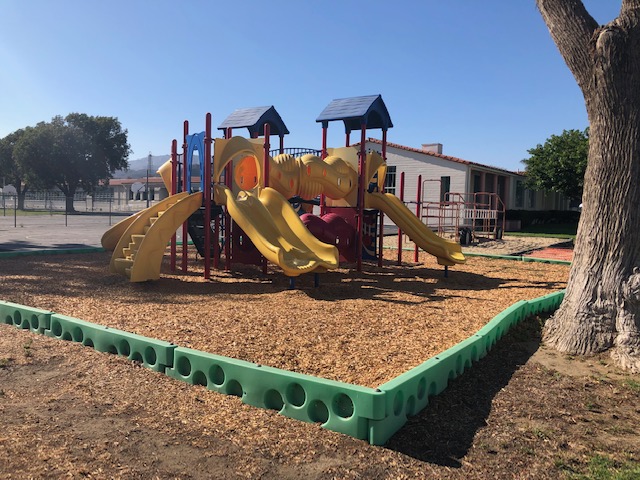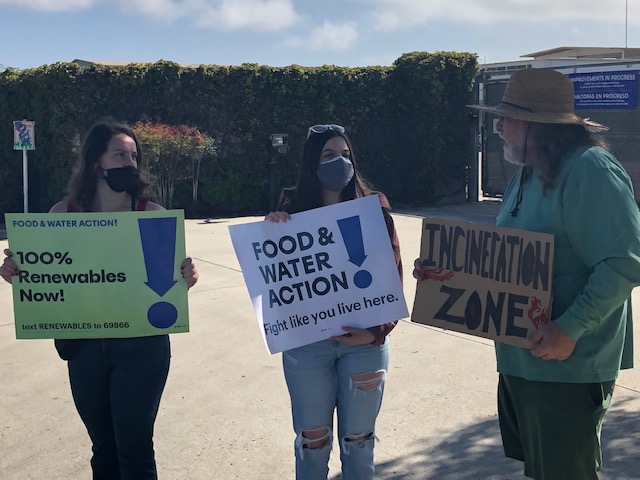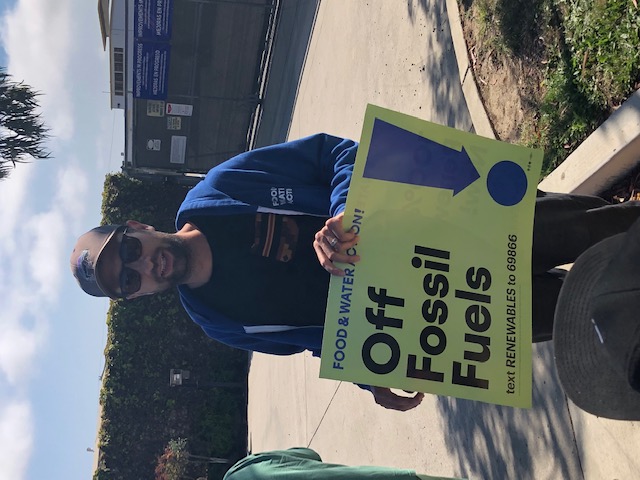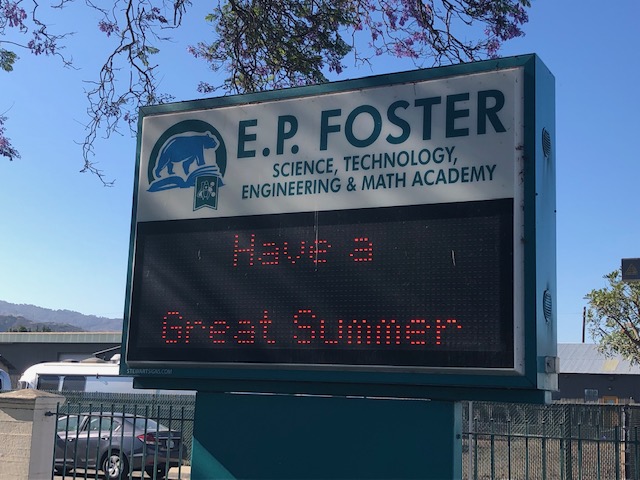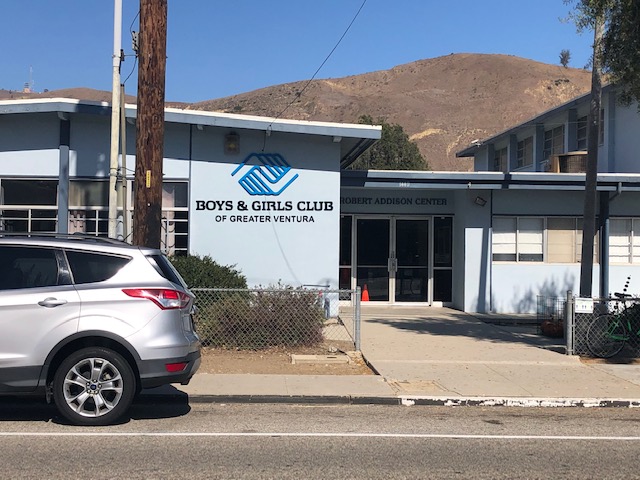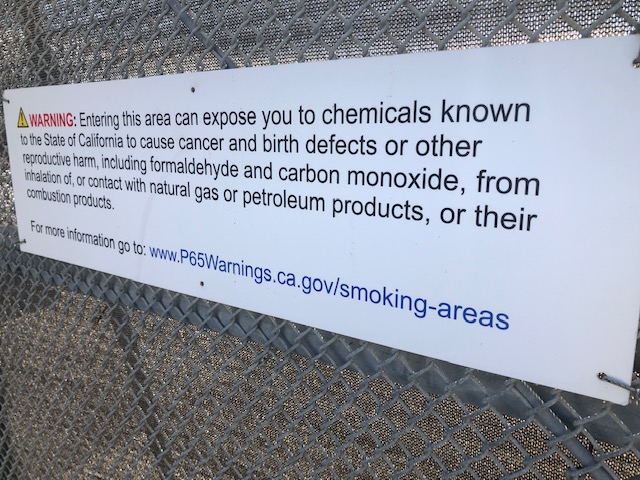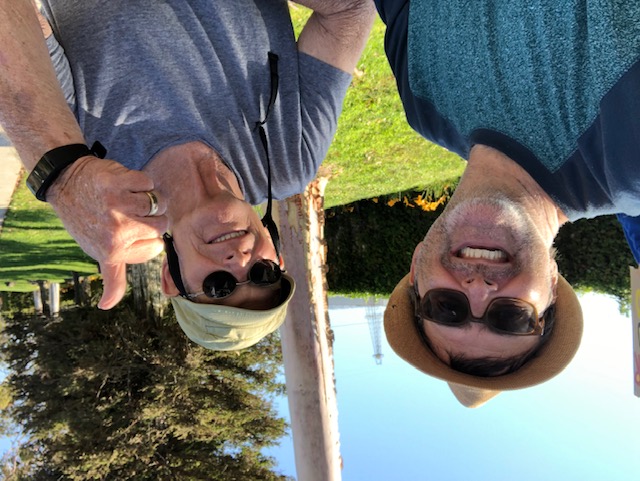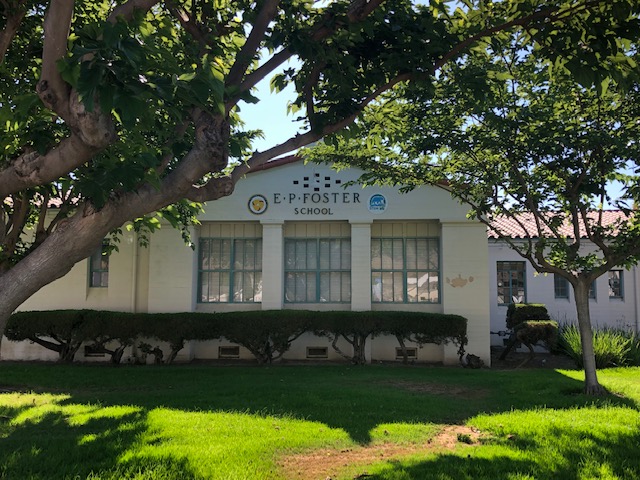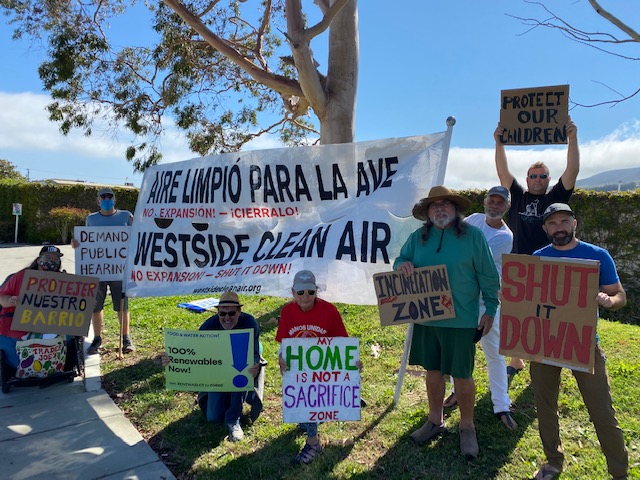 Yesterday, Sierra Club Los Padres Chapter Condor Call editor John Hankins (a.k.a. Condor John) and I attended a vigil by neighbors and allies in front of the SoCalGas’ compressor station site on the Westside of Ventura. The event was billed a vigil because the watch has begun. SoCalGas has technically started their major expansion, even though they don’t have permits to start in earnest. The company is apparently building a temporary office and is digging a trench. They are moving ahead, with the expectation that they will have all the permits and no one will stop them.
Yesterday, Sierra Club Los Padres Chapter Condor Call editor John Hankins (a.k.a. Condor John) and I attended a vigil by neighbors and allies in front of the SoCalGas’ compressor station site on the Westside of Ventura. The event was billed a vigil because the watch has begun. SoCalGas has technically started their major expansion, even though they don’t have permits to start in earnest. The company is apparently building a temporary office and is digging a trench. They are moving ahead, with the expectation that they will have all the permits and no one will stop them.
The company has put up a material in front of its gate so you can’t see in unless you stand upon a hill outside or when the gate opens, which it does frequently. They also put up blue signs on the gate saying “IMPROVEMENTS IN PROGRESS/MEJORAS EN PROGRESO. They are next to the sign in smaller type required by the state of California that says: "Entering this area can expose you to chemicals known to the State of California to cause cancer and birth defects or other reproductive harm, including formaldehyde and carbon monoxide, from inhalation of, or contact with natural gas or petroleum products, or their combustion products.”
I wonder if the chemicals released into the air from their gas compressor know to stay inside the fence. Sometimes NASA has seen them. The property is well landscaped, but can’t cover the giant old building inside where the gases are compressed and move north via pipeline.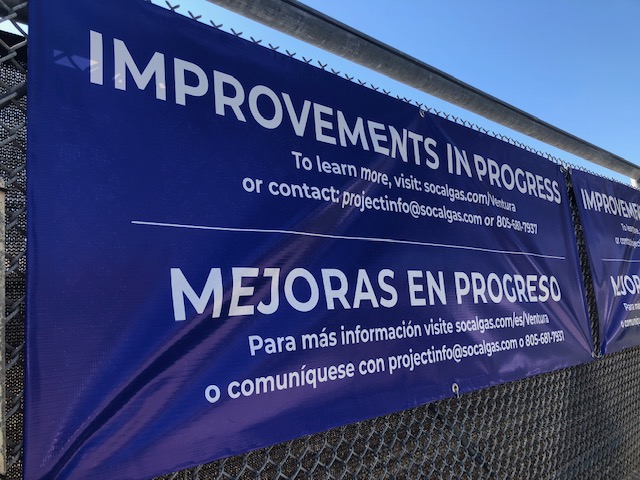
Across the street from the fence is the Boys and Girls Club building on the campus of E.P. Foster Elementary School. It’s perilously close to the compressor property. But it’s just the back of an enormous piece of land that comprises the school. E.P Foster is a math and science magnet and pulls from a large area of western Ventura. The winds can blow pretty strong here near the mountain, which would be bad if the air is toxic. I wear a mask just in case. The school has an enormous field, playgrounds and basketball courts. Built in 1930, it has a grandeur to it. Masons from across California held a parade.
The Westside is a majority-Latino neighborhood. The buildings are a mix of light industrial and homes and apartments. It kind of reminds me of other neighborhoods that have tried to attract artisans and hipsters in the eventual evolution to pricey condos, wine bars, Urban Outfitters and a WeWork. It may turn into that. It may not. There are large lots storing vehicles and equipment in some parts. Homes in others. And then there is the gas compressor.
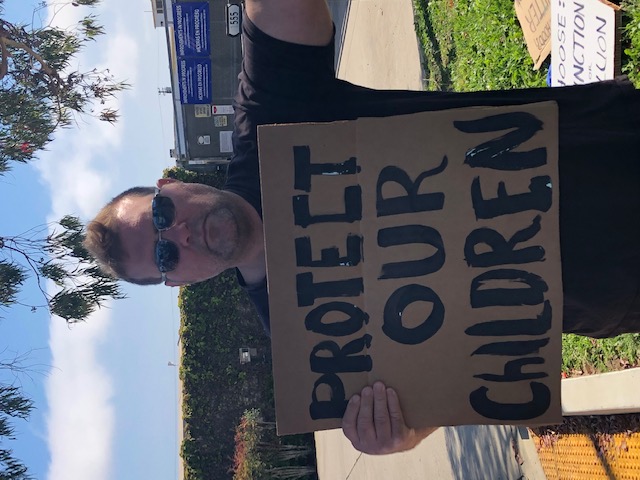 SoCalGas wants to double the compressor capacity starting with digging up toxic dirt from the 100 year-old contaminated site this summer. It’s not clear yet whether they have permission to do it or what their rational for expansion is. The compressed gas moves to La Goleta reservoir underneath UC Santa Barbara and the Santa Barbara airport and throughout Santa Barbara and San Luis Obispo Counties. But future buildings will be largely all-electric. San Luis Obispo has banned gas in new construction and City of Santa Barbara is poised to next month joining 45 other cities including San Francisco and San Jose. There is also a growing pressure to eliminate unground gas reservoirs in Los Angeles. Perhaps the City of Ventura will move away from gas as its neighbor Ojai already has.
SoCalGas wants to double the compressor capacity starting with digging up toxic dirt from the 100 year-old contaminated site this summer. It’s not clear yet whether they have permission to do it or what their rational for expansion is. The compressed gas moves to La Goleta reservoir underneath UC Santa Barbara and the Santa Barbara airport and throughout Santa Barbara and San Luis Obispo Counties. But future buildings will be largely all-electric. San Luis Obispo has banned gas in new construction and City of Santa Barbara is poised to next month joining 45 other cities including San Francisco and San Jose. There is also a growing pressure to eliminate unground gas reservoirs in Los Angeles. Perhaps the City of Ventura will move away from gas as its neighbor Ojai already has.
What’s clear is that vigils like the one today are only going to grow. The neighborhood, the city and the school were aware of the expansion only this year despite SoCalGas’ claim of constant contact with the community. They want an official public hearing, which they are being denied. The backlash is just getting started.
Maybe the next vigil will be by candlelight. Maybe they will grow to be as large as the number of people who voiced opposition to the project at the Public Service Utility Commission last month for two hours and 15 minutes at 2 minutes a piece.
Like the neighborhood, the future is uncertain.
All I know is the property contains chemicals known to the state of California to cause cancer, and it’s product is volatile enough to incinerate the area around it. Oh, and it’s causing climate change, which is also a bad thing.
- Jon Ullman, Sierra Club Los Padres Director
